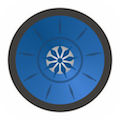La cosa si fa sempre più curiosa, tant'è che prenderò a breve appuntamento per un ascolto a PD dal rivenditore ufficiale, dopo aver (malamente sentito le Silver per problemi tecnici di connessione).
Leggo sul forum Devialet non ufficiale una recensione molto lusinghiera DAL PUNTO DI VISTA SONICO di cui riporto alcuni stralci.
Da premettere che il proprietario dei due Phantom Gold era già possessore di due D400 (ampli da 13.000 €), nonché in passato di Quad ESL 57s, Quad 63s, Quad 989s, Harbeth Monitor 40s, Spendor SP1, Spendor S3/5, B&W 800 Nautilus, B&W 800 Diamonds (1st generation), and Mageneplanar 3.6rs.
Afferma:
"I can't see a reason for the Dxx line of amplifiers. You don't need them. 99.99% of the discerning public will be entirely happy with the sound quality of the Phantom Gold."
"They are a small speaker designed to mimic a point source. This affects how they image, and how you should listen to them. You MUST listen to them sitting down in a low chair, not standing up. A stereo pair must be listened to in the middle. I have mine set up in my living room on either side of a wide door connecting the living and dining rooms. Set up like this, they image like nothing I've heard. A singer recorded further back sounds like he/she is singing in the dining room or sometimes outside the house! "
... a confronto con le Quad e Magneplanar, illuminante anche per le notizie che fornisce sul progettista
"I have my Quad 57s in an adjacent family room with the D400s, and they sound entirely different from the Phantom's. The Quad's radiating surface is about 20x larger than the Phantom's. So, they produce a kind of enveloping sound that makes you feel you are sitting in the first few rows close to the orchestra or the musicians. This can feel nice, but it's kind of a coloration that shouldn't be there. Quad designer Peter Walker realized this, and for the ESL 63, he artificially made it resemble a point source by using delay lines to taper the signal so it resembled a ripple when a stone falls into a lake. The center of the speaker is energized before the surrounding areas. Harbeth's Alan Shaw also believe strongly in point source sound. The Harbeth Monitor 40 is a huge speaker (Stand mounted) with a large baffle. But it sounds kind of funny because it is mimicking a point source. The sound is not in your face, but somewhat distant, and this can be disconcerting with a large speaker."
"So, if you like the sound of a large planar, like the Magneplanar 3.6 or 20.1, or the large moving coil loudspeakers (like line array sources), you will not be happy with the Phantom. But, point source speakers have a kind of accuracy that can be very appealing as long as you realize that not all your music will sound pleasant. If a recording is mastered poorly with mikes placed inside an instrument, it's going to sound pretty bad through the Phantom. But well recorded material sounds magnificent indeed".
"My overall feeling is that the Phantom needs a lot more work to be a durable workhorse for the everyday music lover. The setup procedure is needlessly complicated, and the interfaces are confusing. It's not surprising that Devialet provides free set up for anyone purchasing the Phantom. This is a system that can befuddle even knowledgable tech users".
Tenendo conto del costo di 5200€ la coppia più il Dialog, l'ingombro ridotto, i 20 Hz lineari anche se il diffusore arriva ai 14 Hz! Difficilmente vedo prodotti concorrenti in questo senso...
Suono con mani e piedi...












